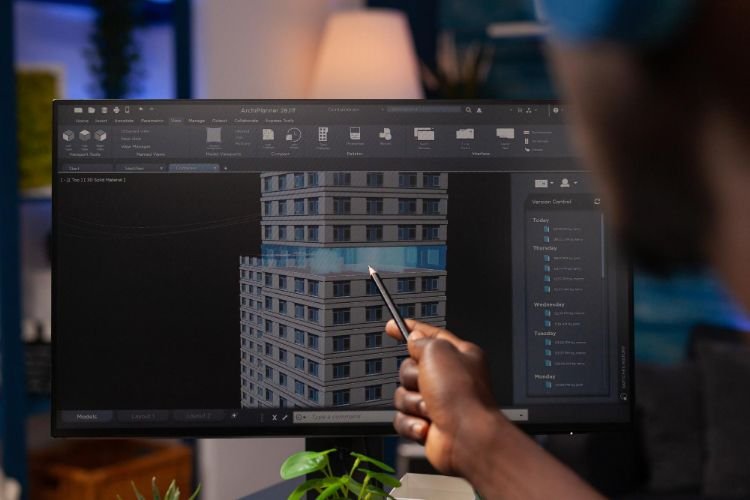CAD- An essential tool for Designing
Importance of CAD in Designing

CAD stands for Computer-Aided Design. It is a technology that utilizes computer systems to assist in the creation, modification, analysis, or optimization of designs. CAD software is widely used across various industries for tasks related to engineering, architecture, product design, and more.
Computer-Aided Design (CAD) plays a crucial role in various industries and is considered an essential tool for designing. The importance of CAD in designing can be highlighted through several key aspects:
Precision and Accuracy:
CAD software enables designers to create highly accurate and precise drawings. The use of digital tools ensures that measurements, dimensions, and geometric properties are consistently and reliably represented.
Efficiency in Design Iterations:
CAD allows designers to quickly and easily make modifications to designs. This flexibility is invaluable during the iterative design process, enabling designers to experiment with different concepts and make changes efficiently.
Visualization and Simulation:
CAD facilitates the creation of 3D models, providing designers with a realistic visualization of their ideas. This aids in better understanding the spatial relationships within a design. Additionally, CAD software often includes simulation capabilities, allowing designers to analyze how a design will behave under various conditions.
Collaboration and Communication:
CAD supports collaboration among design teams, engineers, and stakeholders. Designs can be easily shared and communicated in a standardized format, reducing the likelihood of misinterpretation and enhancing communication throughout the project lifecycle.
Time and Cost Efficiency:
The use of CAD significantly reduces the time required to produce design drawings compared to traditional manual methods. This efficiency translates into cost savings, especially as designs can be modified and updated more rapidly.
Integration with Manufacturing Processes:
CAD models can be seamlessly integrated into computer-aided manufacturing (CAM) processes. This integration streamlines the transition from design to production, reducing errors and ensuring that the final product accurately reflects the designer's intent.
Parametric Design and Design Automation:
CAD software often supports parametric design, where the dimensions and characteristics of objects are defined using parameters. This allows for easy modification and updates, and it supports design automation, enabling the creation of families of related designs.
Documentation and Standards Compliance:
CAD tools assist in the creation of detailed documentation, including drawings, annotations, and specifications. This documentation is essential for regulatory compliance and adhering to industry standards.
Versatility Across Industries:
CAD is used across a wide range of industries, including architecture, engineering, automotive, aerospace, electronics, and more. Its versatility makes it an indispensable tool for professionals in various design disciplines.
Innovation and Creativity:
CAD empowers designers to explore innovative and creative ideas. By providing a platform for experimentation, visualization, and analysis, CAD contributes to pushing the boundaries of design and fostering innovation.
In summary, the importance of CAD in designing lies in its ability to enhance precision, streamline processes, facilitate collaboration, and empower designers to create innovative and efficient solutions across diverse industries.
CAAD Center Thrissur is the Best CAD Institute in Thrissur. Step into the world of possibilities and become a proficient CAD professional with us.
Latest Blogs

How to choose a good CAAD Centre?

Importance of Revit for Architects

Importance of CAD in Designing

Importance of BIM in Architects

The top Civil CADD training center in Thrissur

Creating Realistic Interiors with AutoCAD.

MEP engineering's scope By 2025

The Importance of Thrissur Civil CAAD Training Certification: Capture the Chances!


